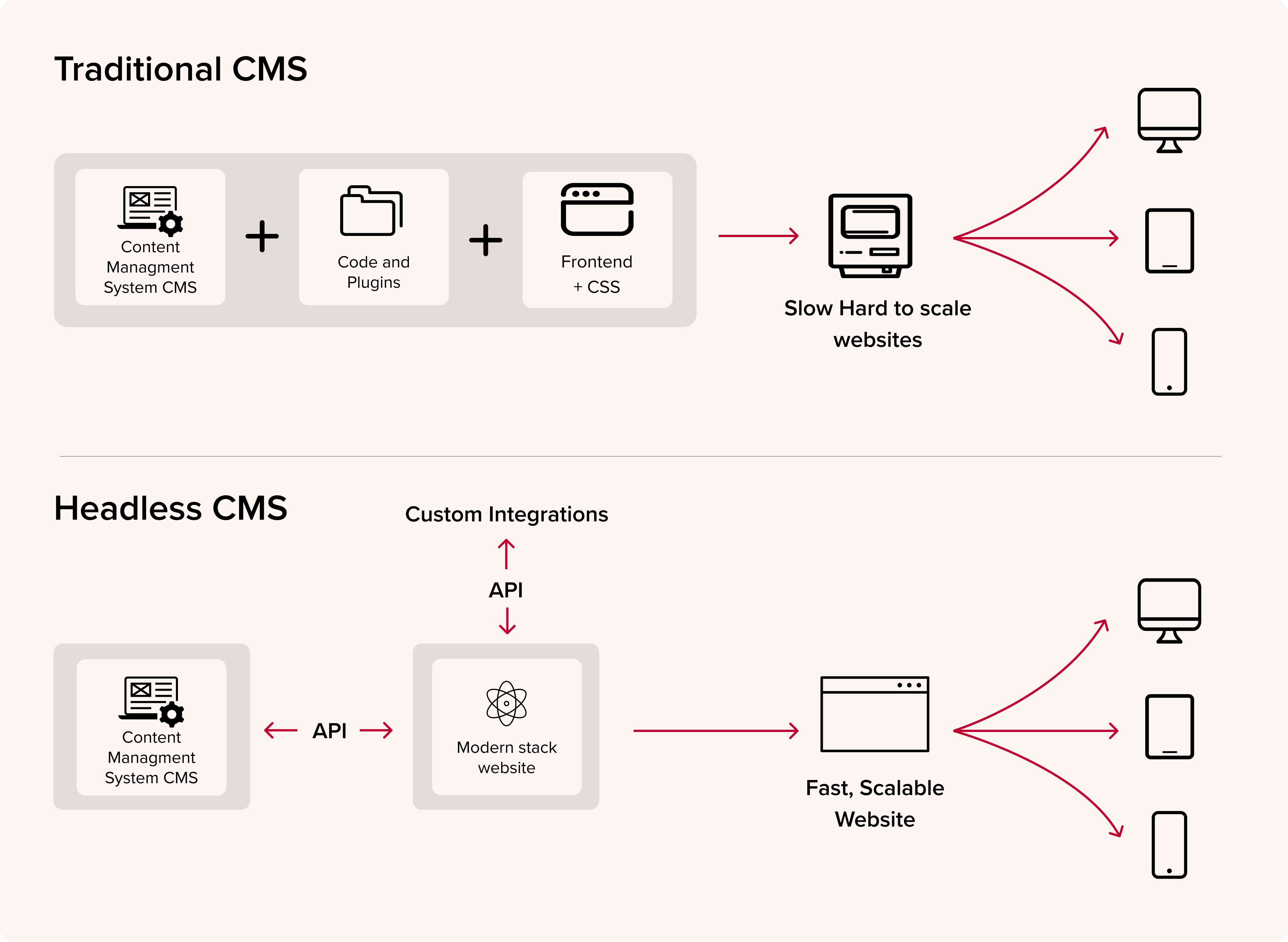Pros and Cons of a Headless CMS
As a developer, I often find myself trying to explain the complex in as simple a way as possible, not always with success but I’ll do my best here…
A headless CMS is one of the best ways to create a website that performs well for users. That is, it loads quickly and suffers less of the delays you see on poorly coded websites.
Delivering a good User Experience (UX) for your users has never been more important, both for your ROI on maintaining this crucial digital presence and your visibility in traditional and AI-powered Search Engines.
Traditional CMS: How It Works
In a traditional CMS, both the front end and back end are built using the same coding language and framework. This setup allows you to manage content and control the front-end visuals through tools like themes or block editors, all accessible from the CMS dashboard.
While this approach is convenient, it comes with limitations:
- Developers are often restricted to the theme-based and plugin ecosystem of the CMS.
- Customisation can be challenging and is limited to the options available within the CMS.
Headless CMS: A Modern Alternative
A headless CMS takes a different approach by decoupling the front end and back end. The CMS focuses solely on the backend—managing content via a dashboard—while giving developers the freedom to use any frontend technology.
This separation unlocks greater customisation opportunities and enables developers to leverage cutting-edge front-end frameworks and tools.

Benefits of a Headless CMS
1. Faster Performance
Headless CMSs enable developers to build lightweight, high-performance frontends. These frameworks can:
- Optimise load times by only requesting necessary data from the backend.
- Use CDNs (Content Delivery Networks) to cache content, improving speed and reducing latency.
The result is a smoother, faster user experience. - Search engines, especially Google, use metrics to figure out how fast and easy a page is to use. By making your site load faster and improving page speed, you’ll make sure your site follows Google’s recommendations and best practices that make your site more visible in search results.
2. Flexibility and Customisation
A headless CMS empowers developers to use any frontend framework of their choice. Content is accessed via an API, allowing for:
- Custom-built frontend experiences tailored to specific needs.
- Seamless integration with other services without relying on CMS plugins.
3. Content Reusability
With a headless CMS, content can be requested through APIs and reused across multiple channels. For example:
- A single CMS can power both a website and a mobile app.
- This central hub for content eliminates duplication, streamlining content creation and saving time.
4. Enhanced Security
By separating the frontend from the backend, a headless CMS adds an extra layer of security. Here’s how:
- The frontend communicates with the backend via APIs, eliminating direct access to the content database.
- Developers can then secure API details within layers of code, reducing the risk of attacks.
Challenges of a Headless CMS
1. Complexity in Maintenance
Managing a headless CMS requires maintaining both the CMS software and the frontend framework, which can demand more resources. At Friday, we’ve established a streamlined maintenance process to keep your headless website up-to-date on a monthly basis.
2. Lack of Built-In Presentation Layer
Unlike traditional CMSs, most headless CMSs do not include visual editors that allow content creators to preview changes before publishing. To address this, we’ve developed a custom solution leveraging CMS API revisions to enable content previews during the editing process.
3. Need for Technical Expertise
Unlike traditional CMSs, a headless CMS requires developers to build the frontend. While this adds complexity, it also allows for a fully customised website tailored to your needs.
4. Not Suitable for All Businesses
For businesses with straightforward content requirements, the additional complexity and cost of a headless CMS may not be justified. In such cases, a traditional CMS may be a better fit.
By understanding the strengths and challenges of both traditional and headless CMSs, you can make an informed choice that aligns with your business needs and goals.
At Friday, we specialise in building and maintaining headless CMS solutions, ensuring that you get the best of modern technology tailored to your unique requirements.
If you’re looking for a digital agency to build a headless CMS website for you, then get in touch with us now.


